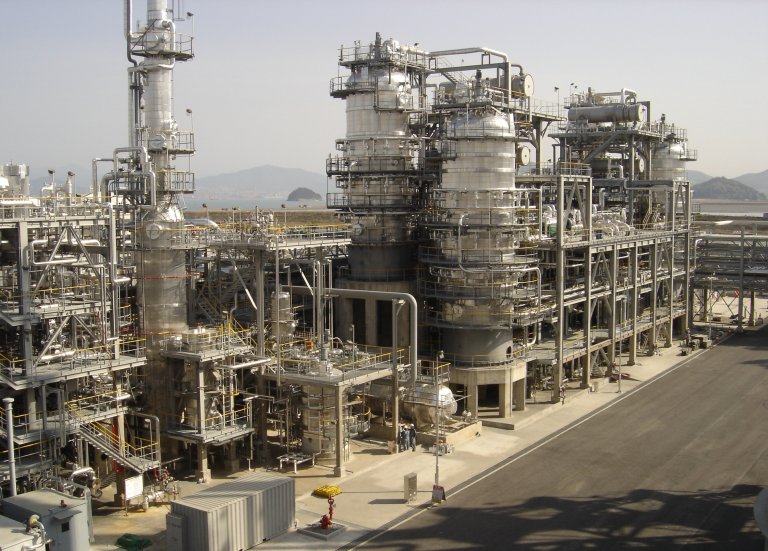Bisphenol A (BPA) Technology

The Badger bisphenol A (BPA) technology produces a high-purity BPA product from phenol and acetone that is suitable for polycarbonate and epoxy resin applications. The process uses ion-exchange resin catalyst, and features proprietary purification technology. In the BPA condensation reactors, phenol and acetone react over an ion-exchange resin catalyst in the presence of a homogeneous promoter and excess phenol, to produce bisphenol A, water and various byproducts. The catalyst system has a long catalyst life.
The reaction water and the small amount of unreacted acetone are removed from the reactor effluent by distillation. Acetone is recycled to the reactor system. No acetone purge is required with this process. The reaction water is sent to the waste recovery system, from which wastewater suitable for biotreatment and phenol suitable for recycle to the reaction system are produced. The dehydration effluent is concentrated to a BPA level suitable for crystallization.
BPA is separated from byproducts in a proprietary solvent crystallization and recovery system to produce the adduct of p,p BPA and phenol. Mother liquor from the purification system is distilled in the solvent recovery section to recover dissolved solvent. The solvent-free mother liquor stream is recycled to the reaction system. A purge from the mother liquor is sent to the waste recovery system.The purified adduct is processed in a BPA finishing system to remove phenol from the product, and the resulting molten BPA is solidified in the prill tower to produce prills suitable for the merchant BPA market, including polycarbonate production.
Commercial Experience
- 21 licensed BPA plants in commercial operation with installed capacity of over 3.9 million tpy
- Single train plant capacities of 60,000 tpy – 240,000 tpy
- Technology reference plant operating since 1992
- 98% demonstrated on-stream factor
Resources
Badger's Technology

- 99.95% p.p-BPA suitable for polycarbonate and epoxy resins feedstocks
- Long catalyst life
- Infrequent turnarounds
- Excellent product color